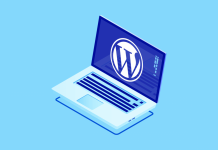Progressive Web Apps (PWA) are web applications that combine the best of both worlds- the functionality of a mobile app and the accessibility of a website.
PWAs provide users with an app-like experience while being accessible on any device with a browser, regardless of the platform. But how does PWA work?
In this blog, we will explore the inner workings of PWAs, their benefits, challenges, and best practices.
What’s a progressive web app?

Progressive Web Apps (PWA) are web applications that provide users with a native app-like experience. PWAs are designed to work on any device with a browser, regardless of the platform. PWAs use the latest web technologies such as Service Workers, Web App Manifest, and App Shell to deliver a fast and responsive user experience.
How does PWA work?
Let’s take a look at how PWAs work.
Browser Compatibility
PWAs work on any device with a modern web browser that supports Service Workers and Web App Manifest. This means that PWAs can be accessed on devices running any operating system and using any web browser that supports these features.
Service Workers
PWAs use Service Workers, which are scripts that run in the background and handle network requests, cache resources, and manage offline functionality. Service Workers act as a proxy between the web application and the server, allowing the PWA to function even when the network connection is weak or offline. Service Workers are also responsible for caching static resources like HTML, CSS, and JavaScript, making the PWA load faster, even on slower network connections.
Web App Manifest
PWAs have a Web App Manifest file that provides metadata about the app, such as the app’s name, description, and icons. The manifest file also allows the app to be installed on the user’s device. When a user installs a PWA, it appears as a regular app on the device, with an icon on the home screen and the app drawer. Users can launch the app with a single tap, just like a native app.
App Shell
PWAs have an App Shell, which is a minimal HTML, CSS, and JavaScript code that loads quickly and provides a responsive user interface. The App Shell is loaded first when the user launches the PWA, providing a primary user interface while the rest of the app’s content and functionality are loaded in the background. The App Shell allows PWAs to load faster, even on slower network connections, and provides a seamless user experience.
Offline Capability
PWAs can work offline or with poor network connectivity by caching app resources using Service Workers. When a user launches a PWA while offline, the cached resources are used to provide a limited but functional user experience. For example, a news app may display cached articles, and a social media app may allow users to view their cached feed and compose new posts to be sent when the network connection is restored.
Some famous brands have been utilizing PWAs
There are several famous examples of Progressive Web Apps (PWAs) that have gained popularity among users and businesses alike. Let’s take a look at some of the most notable examples of PWAs:
Twitter Lite
Twitter Lite is a PWA that provides users with a fast and responsive mobile experience. It is designed to work on any device with a modern web browser and offers a similar experience to the native app. This lite version uses Service Workers to provide offline capabilities and offers push notifications to users.
Pinterest is a social media platform that allows users to discover and save ideas for their projects and interests. The Pinterest PWA provides users a fast and responsive experience, even on slow network connections. The Pinterest PWA uses Service Workers to cache content and allows users to pin content to their home screen for easy access.
Flipkart
Flipkart is an e-commerce platform that provides users with a wide range of products, including electronics, clothing, and home appliances. The Flipkart PWA is designed to work on any device with a modern web browser and offers a fast and responsive experience. The Flipkart PWA uses Service Workers to provide offline capabilities and offers push notifications to users.
Starbucks
Starbucks is a popular coffeehouse chain that provides users with a convenient way to order and pay for their favorite drinks. The Starbucks PWA provides users with a fast and responsive mobile experience and allows users to customize their orders and pay using their mobile devices. The Starbucks PWA uses Service Workers to provide offline capabilities and offers push notifications to users.
Forbes
Forbes is a popular news and media platform that provides users with a wide range of articles and content. The Forbes PWA provides users with a fast and responsive mobile experience and allows users to save articles for offline reading. The Forbes PWA uses Service Workers to cache content and offers push notifications to users.
Progressive web app pros and cons
Let’s shed light on the benefits and challenges of progressive web apps.
Benefits of PWAs
- Faster Loading Time: PWAs use Service Workers and App Shell to provide a fast and responsive user experience. PWAs load quickly, even on slow network connections.
- App-Like Experience: PWAs provide users with an app-like experience, including push notifications, full-screen mode, and the ability to add the app to the home screen.
- Cross-Platform Compatibility: PWAs work on any device with a modern web browser, regardless of the platform. This makes it easy for developers to create a single app that works on multiple platforms.
- SEO Friendly: PWAs are easily discoverable by search engines, which makes them an excellent choice for businesses looking to improve their online presence.
- Push Notifications: PWAs can send push notifications to users even when the app is not open, which is a powerful tool for engaging with users and increasing retention.
Challenges of PWAs
- Limited Access to Device Features: PWAs have limited access to device features such as contacts, cameras, and NFC. This makes it difficult to create apps that require these features.
- Compatibility Issues with Older Browsers: PWAs require modern web browsers that support Service Workers and Web App Manifest. Older browsers may not support these features, which can limit the app’s functionality.
- Low Discoverability: PWAs are not as easily discoverable as native apps, which can limit their reach and impact.
How to make a progressive web app?

A progressive web app development process is a long elaborate process. Here is how you can understand it in 7 quick steps.
Start with a responsive design
A PWA must be designed to work on any device or screen size. It should have a responsive design that can adapt to different screen sizes.
Use HTTPS
A PWA must be served over HTTPS to ensure security and prevent unauthorized access.
Make it installable
A PWA should be installable on a user’s device like a native app. This requires adding a manifest file and service worker.
Create a manifest file
The manifest file is a JSON file that describes the PWA’s metadata, such as its name, icon, and theme color.
Use a service worker
A service worker is a script that runs in the background and can intercept network requests. It allows a PWA to work offline or with a poor network connection.
Add offline support
A PWA should be able to work offline. You can achieve this by using a service worker and caching resources.
Add push notifications
Push notifications can help keep users engaged with your PWA. You can add push notifications using a service worker and the Web Push API.
Test your PWA
Once you’ve built your PWA, test it thoroughly to ensure that it works as intended. You can use tools like Lighthouse and Chrome DevTools to test and debug your PWA.
Other than all these factors make sure to hire developers that can build highly scalable web apps. Because other than these factors they’re a lot of other integrations and updates that go hand in hand, especially in the case of web applications.
Best Practices for PWAs

How PWA work also depends on how you go about the development process. In order to deliver an effective progressive web app, there are some best practices that you can use.
- PWAs should design responsive layouts that adapt to different screen sizes, allowing them to work on any device with any screen size.
- To optimize performance, developers should optimize PWAs for fast loading times and minimal data usage.
- To ensure security, developers should design PWAs with security in mind, incorporating HTTPS encryption and implementing secure authentication mechanisms.
- To maintain optimal functionality, developers should regularly update PWAs to fix bugs, add new features, and enhance performance.
- Focus on User Experience: PWAs should provide a seamless user experience, including fast loading times, intuitive navigation, and engaging content.
These are some of the hacks that every digital product development agency can offer, however, it is important for you to understand what extra value your development team is adding to your product.
Conclusion
Progressive web apps are modern and innovative types of web applications that utilize the latest technologies to enhance performance and usability. By following the steps outlined in this blog, you can develop a progressive web app that will empower your business to reach new heights. These apps are designed to be fast and responsive, catering to users who expect nothing short of excellence in their online experiences. If you’re keen on discovering more about progressive web apps, this guide has all the details you need.









